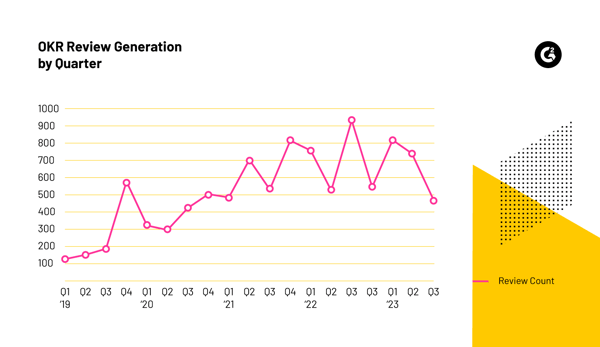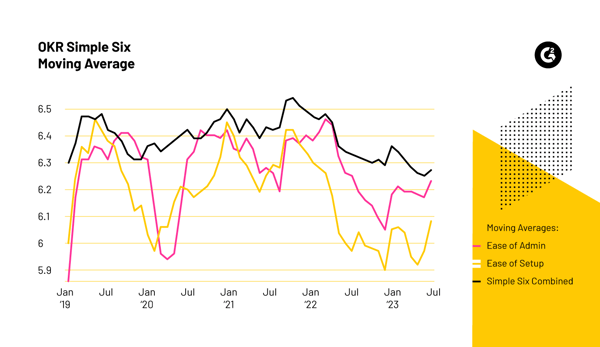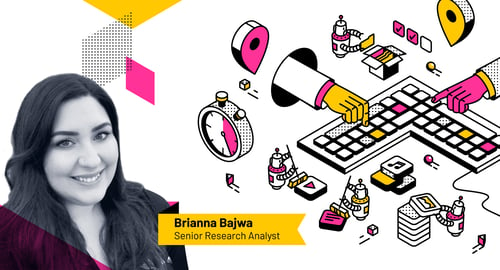This post is part of G2's 2024 technology trends series. Read more about G2’s perspective on digital transformation trends in an introduction from Chris Voce, VP, market research, and additional coverage on trends identified by G2’s analysts.
Work automation: reducing inefficiency and redundancy in the workplace
Prediction
In 2024, with hybrid work here to stay, automation between applications will play a critical role in reducing low-value work and overcoming challenges related to app sprawl.
While hybrid work is the new standard, it is certainly not perfect. With businesses looking to improve hybrid workplace efficiency, addressing these challenges becomes all the more critical. Let's delve deeper into the issue of app sprawl and its impact on modern workplaces.
The rise of app sprawl
According to a recent study by WFHResearch, 12.7% of full-time employees are fully remote, and 28.2% have a hybrid schedule. Additionally, by 2025, it’s estimated that close to 33 million Americans will have a fully remote schedule, which is approximately 22% of the overall workforce.
With so many people working in remote settings, companies have adapted by purchasing more and more SaaS solutions to fulfill new needs created by this hybrid and remote work style.
However, an unintended consequence of this rapid adoption of tech is app sprawl.
App sprawl is the overabundance of SaaS in the workplace, resulting in fragmented and disjointed data spread across multiple apps in a company’s portfolio. According to a Forbes study, 40% of surveyed workers said real-time collaboration has been replaced with asynchronous and disparate collaboration tools.
This fragmentation of data and information across apps is inefficient and limiting. It creates silos across an organization, making it difficult to share information while generating more administrative and redundant work for many workers.
Implementing multiple, disjointed SaaS solutions poses a problem for administrators
The inability to integrate SaaS tools within the critical software portfolio can become a huge administrative issue for organizations. Objectives and key results (OKR) software has become a key component of tech stacks across many businesses these past few years.
According to G2 data, this category saw a significant rise in demand following the start of the COVID-19 pandemic in early 2020. As you can see in the chart below, review generation for OKR began to climb around Q4 of 2019 and continued to increase following Q2 of 2020.

As companies continued to look for lasting solutions to help them adapt to the sudden shift to remote work, SaaS products like OKR became a crucial tool for companies trying to communicate, track, and measure goals across a suddenly disconnected workforce.
However, the increase in review generation uncovered some common issues across SaaS adoption: concerns with admin and setup of new products into an existing ecosystem.
OKR is the perfect example here—the graph below illustrates how admin and setup were less of an issue before the pandemic. However, administrative concerns began after companies shifted to remote work and rapidly adopted multiple SaaS solutions.
The below graph shows a steep drop in Ease of Admin and Ease of Setup scores around April-May of 2020. While scores appeared to recover a bit throughout the year, they began to steadily drop following January 2021, with Ease of Setup reaching a record low in mid-2023.
This could be an opportunity for SaaS companies to assess existing setup and integration offerings and ideate innovative ways to improve customer experience.

Automation will transform remote and hybrid work
While the rapid adoption of multiple SaaS solutions early in the pandemic has led to many companies experiencing app sprawl, siloed information, and wasted time, the solution is fairly simple: automation.
In 2024, buyers will prioritize automation between tools to reduce redundant work and get more time to do the jobs they were hired to do. Buyers will seek permanent solutions seamlessly integrating with their core ecosystems to communicate and share information automatically.
While some may look to downsize the number of apps their organization uses, others will look for solutions to replace existing tools that cannot fully integrate with the rest of their tech stack.
Automation will significantly transform a disjointed hybrid and remote workforce into a smooth and seamless experience.
Learn to unlock organization knowledge and find the exact information your team needs with enterprise search.
Edited by Shanti S Nair


 by Brianna Bajwa
by Brianna Bajwa
 by Brianna Bajwa
by Brianna Bajwa
 by Brianna Bajwa
by Brianna Bajwa